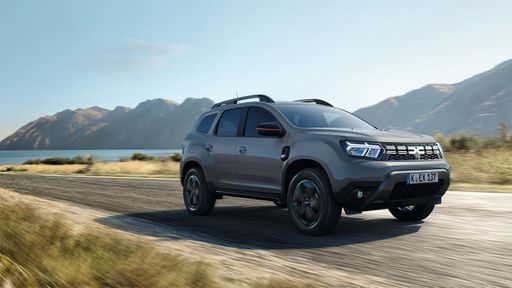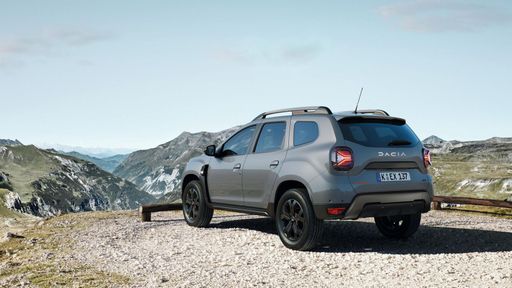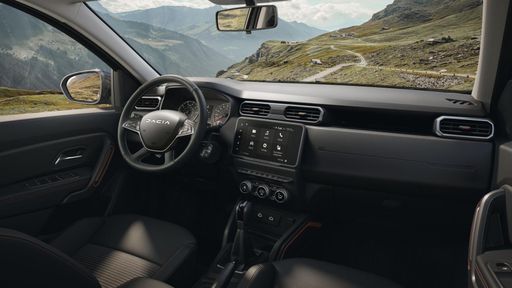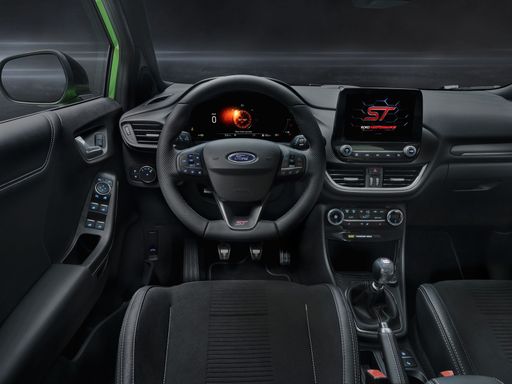Dacia Duster vs Ford Puma – Kumpi malli toimii paremmin arjessa?
Kaksi autoa, yksi kaksintaistelu: Dacia Duster kohtaa Ford Puma.
Kumpi vakuuttaa enemmän suorituskyvyssä, kulutuksessa ja hinta–laatusuhteessa? Selvitä nyt!
Compact SUV Showdown: Dacia Duster vs. Ford Puma
In the ever-competitive compact SUV market, two models have captured attention with their distinct offerings: the Dacia Duster and the Ford Puma. Both vehicles are targeted at drivers seeking a balance between utility, performance, and economy, but they bring these elements to life in unique ways. In this comparison, we'll delve into the technical aspects and innovations that set these two apart.
Performance and Engine Choice
The 2024 Dacia Duster offers a diverse range of engine options that include LPG, full hybrid, and petrol MHEV (Mild Hybrid Electric Vehicle). The horsepower varies from 91 HP to 140 HP, allowing for choices based on individual performance requirements. The Duster also stands out with potential drive options of either front-wheel drive or all-wheel drive—a handy feature for those adventurous enough to take their SUV off the beaten path.
On the other hand, the Ford Puma embraces a more modern engine lineup for its 2024/2025 models, focusing on petrol MHEV and electric options. With power outputs ranging from 125 HP to 168 HP, the Puma aims squarely at efficiency and lower emissions, evident from its front-wheel drive-only setup that maximizes fuel economy and driving ease.
Efficiency and Consumption
Fuel consumption is an essential factor for any SUV owner today. The Dacia Duster offers a consumption range from 5 L/100km to 8.1 L/100km, shaped by its diverse powertrain options.
Ford Puma’s pursuit of champions in efficiency shows with numbers like 5.4 L/100km on its MHEV variants and even less when considering the electric models, which boast a consumption of 13.1 kWh/100km. An all-electric range up to 376 km adds another edge in sustainability that might appeal to eco-conscious consumers.
Interior Space and Design
Interior design and space utilization are crucial considerations in this vehicle category. The Duster’s rugged persona extends into its spacious interior, accommodating five passengers comfortably, with a trunk capacity peaking at 517 liters.
The Puma, while slightly more compact in length, optimizes its space impeccably with a trunk capacity reaching 523 liters. Given its clever space management and attractive design, the Puma appeals to those preferring a sleeker urban SUV without sacrificing cargo volume.
Innovations and Technology
While not historically known for tech extravagance, Dacia has infused the Duster with sensible technological improvements and engine versatility to attract a broader range of consumers.
Conversely, the Ford Puma aims to impress with its hybrid systems and advanced drive assistance technologies that adequately complement its modern powertrains. Tech-savvy buyers will appreciate the Puma’s dual-clutch automatic transmission and the available all-electric drive variant.
Conclusion: Choosing Between the Duster and Puma
Choosing between the Dacia Duster and the Ford Puma ultimately depends on what you value most in an SUV. The Duster stands as an all-terrain champion with diverse engine choices and drive configurations. The Ford Puma, however, sets the stage for urban sophistication with superior efficiency, high-tech features, and future-forward powertrains. Both are commendable in their rights, offering unique propositions in the competitive compact SUV landscape.
For those set on efficiency and modern technology, the Puma is an intriguing choice. However, if versatility and adventurism are your goals, the Duster may just be the perfect fit.
Tässä mennään yksityiskohtiin: tekniset erot tarkemmin
Kustannukset ja kulutus: Hinnan ja tehokkuuden vertailussa erot tulevat usein selvimmin esiin. Tässä ratkaistaan, kumpi malli sopii paremmin budjettiisi pitkällä aikavälillä.
Dacia Duster on hinnassa merkittävä edullisempi – sen lähtöhinta on 19000 €, kun taas Ford Puma maksaa 28900 €. Ero on noin 9910 €.
Polttoaineenkulutuksessa näkyy ero: Dacia Duster kuluttaa 5 L ja on siten tuskin havaittava taloudellisempi kuin Ford Puma, jonka kulutus on 5.40 L. Ero on noin 0.40 L /100 km.
Moottori ja suorituskyky: Teho, vääntömomentti ja kiihtyvyys kertovat paljon auton ajotuntumasta. Tässä näkyy, kumpi tarjoaa enemmän ajamisen iloa.
Moottoritehossa Ford Puma on vähän etulyöntiasemassa – 168 hv verrattuna 140 hv:een. Ero on noin 28 hv hv.
Kiihdytyksessä 0–100 km/h Ford Puma on huomattava nopeampi – 7.40 s vs. 9.90 s. Ero on noin 2.50 s sekuntia.
Huippunopeudessa Ford Puma on pienessä määrin edellä – se yltää 210 km/h:een, kun taas Dacia Duster saavuttaa 180 km/h. Ero on noin 30 km/h.
Vääntömomentissa näkyy myös ero: Ford Puma vetää erottuva voimakkaammin, 290 Nm verrattuna 230 Nm:een. Eroa on noin 60 Nm.
Tila ja käytännöllisyys: Perheauto vai arjen kumppani – kumpi tarjoaa enemmän tilaa, mukavuutta ja käytettävyyttä?
Molemmissa autoissa on tilaa 5 henkilölle.
Omapainossa Ford Puma on kevyt kevyempi – 1316 kg verrattuna 1351 kg:een. Painoero on noin 35 kg.
Tavaratilan koossa Ford Puma tarjoaa tuskin havaittava enemmän – 523 L verrattuna 517 L:een. Ero on noin 6 L.
Maksimikantavuudessa Dacia Duster pärjää erottuva paremmin – jopa 1609 L, noin 326 L enemmän kuin Ford Puma.
Kantavuudessa Ford Puma on tuskin havaittava parempi – 469 kg verrattuna 430 kg:een. Ero on noin 39 kg.
Yhteenvetomme: Ford Puma osoittautuu olevan voittaa selvästi ja saa siksi tittelin DriveDuel Champion!
Tässä vertailussa Ford Puma on monipuolisempi kokonaisuus.
Dacia Duster
Duster on saanut paljon huomiota tämän päivän automarkkinoilla erinomaisella hinta-laatusuhteellaan. Sen rohkea muotoilu ja korkeampi maavara tekevät siitä erinomaisen valinnan niin kaupunkiajoon kuin maastokokeiluihinkin. Tämä kompakti SUV yhdistää käytännöllisyyden ja tyylikkyyden, joten se houkuttelee monia erilaisia kuskeja.
Tiedot @ dacia-presse.de
@ dacia-presse.de
 @ dacia-presse.de
@ dacia-presse.de
 @ dacia-presse.de
@ dacia-presse.de
 @ dacia-presse.de
@ dacia-presse.de
Ford Puma
Ford Puma on saanut runsaasti huomiota upealla muotoilullaan ja käytännöllisillä ominaisuuksillaan. Sen kompakti koko yhdistää mukavasti energisen ajokokemuksen ja tilavat tavaratilat. Tämä auto on täydellinen valinta kaupunkiajoon, yhdistäen tyylikkyyden ja toimivuuden saumattomasti.
Tiedot @ puma.fordpresskits.com
@ puma.fordpresskits.com
 @ puma.fordpresskits.com
@ puma.fordpresskits.com
 @ puma.fordpresskits.com
@ puma.fordpresskits.com
 @ puma.fordpresskits.com
@ puma.fordpresskits.com

|

|
|
|
|
Kustannukset ja kulutus |
|
|---|---|
|
Hinta
19000 - 29000 €
|
Hinta
28900 - 42400 €
|
|
Kulutus L/100km
5 - 7.6 L
|
Kulutus L/100km
5.4 - 5.9 L
|
|
Kulutus kWh/100km
-
|
Kulutus kWh/100km
13.1 - 13.9 kWh
|
|
Sähköinen toimintasäde
-
|
Sähköinen toimintasäde
361 - 376 km
|
|
Akun kapasiteetti
0.60 kWh
|
Akun kapasiteetti
43 kWh
|
|
CO2
113 - 148 g/km
|
CO2
0 - 135 g/km
|
|
Polttoainesäiliön tilavuus
49 - 55 L
|
Polttoainesäiliön tilavuus
42 L
|
Mitat ja kori |
|
|---|---|
|
Kori
SUV
|
Kori
SUV
|
|
Istuimet
5
|
Istuimet
5
|
|
Ovet
5
|
Ovet
5
|
|
Omamassa
1351 - 1465 kg
|
Omamassa
1316 - 1563 kg
|
|
Tavaratila
430 - 517 L
|
Tavaratila
456 - 523 L
|
|
Pituus
4343 mm
|
Pituus
4186 - 4226 mm
|
|
Leveys
1813 mm
|
Leveys
1805 mm
|
|
Korkeus
1656 - 1661 mm
|
Korkeus
1550 - 1555 mm
|
|
Maksimi tavaratila
1545 - 1609 L
|
Maksimi tavaratila
1216 - 1283 L
|
|
Kantavuus
414 - 430 kg
|
Kantavuus
367 - 469 kg
|
Moottori ja suorituskyky |
|
|---|---|
|
Moottorityyppi
Kaasu (LPG), Täyshybridi, Bensiini MHEV
|
Moottorityyppi
Sähkö, Bensiini MHEV
|
|
Vaihteisto
Manuel, Automaatti
|
Vaihteisto
Automaatti, Manuel
|
|
Vaihteiston tyyppi
Manuaalivaihteisto, Automaattinen manuaalivaihteisto
|
Vaihteiston tyyppi
Alennusvaihteisto, Manuaalivaihteisto, Kaksoiskytkin automaatti
|
|
Vetotapa
Etuveto, Neliveto
|
Vetotapa
Etuveto
|
|
Teho hv
91 - 140 hv
|
Teho hv
125 - 168 hv
|
|
Kiihtyvyys 0-100 km/h
9.9 - 14 s
|
Kiihtyvyys 0-100 km/h
7.4 - 9.8 s
|
|
Huippunopeus
160 - 180 km/h
|
Huippunopeus
160 - 210 km/h
|
|
Vääntömomentti
160 - 230 Nm
|
Vääntömomentti
170 - 290 Nm
|
|
Sylinterien lukumäärä
3 - 4
|
Sylinterien lukumäärä
3
|
|
Teho kW
67 - 104 kW
|
Teho kW
92 - 124 kW
|
|
Iskutilavuus
999 - 1598 cm3
|
Iskutilavuus
999 cm3
|
Yleiset |
|
|---|---|
|
Mallivuosi
2024 - 2025
|
Mallivuosi
2025
|
|
CO2-tehokkuusluokka
D, C, E
|
CO2-tehokkuusluokka
A, D
|
|
Merkki
Dacia
|
Merkki
Ford
|
Mitä vetotapavaihtoehtoja Dacia Duster tarjoaa?
Mallia tarjotaan Etuveto tai Neliveto-versiona.
Näytetyt hinnat ja tiedot ovat arvioita, jotka perustuvat Saksan listahintoihin, ja voivat vaihdella maittain. Nämä tiedot eivät ole oikeudellisesti sitovia.
